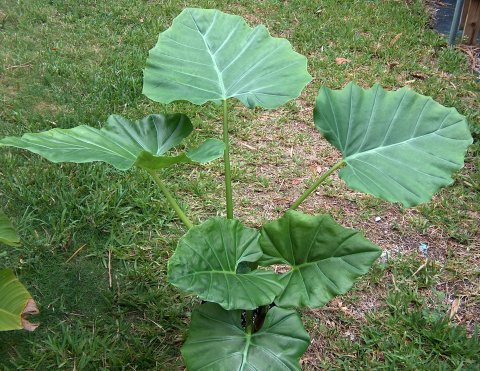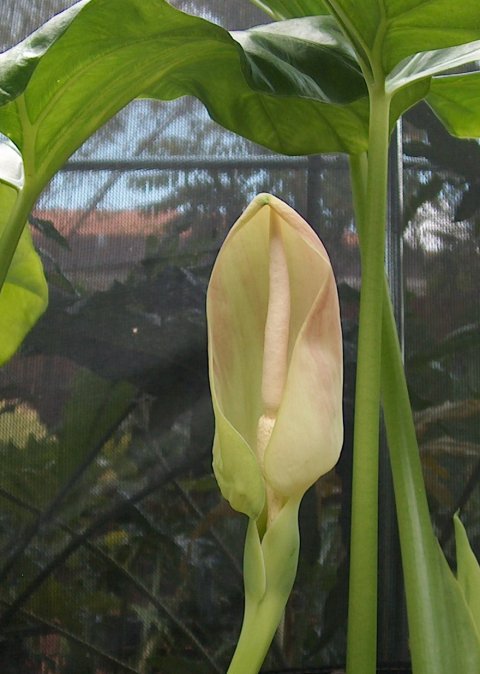Alocasia hypnosa

Alocasia hypnosa stands apart from most other Alocasia species the fancier is likely to encounter. Firstly, this plant has a true dormancy period in that it will grow and bloom quickly in the spring and summer, then die down and go dormant for the winter. This is a desirable trait, especially for those who love growing plants of this type in non-tropical climates.
Secondly, this Alocasia produces underground runners, much like some species of Colocasia. This is unlike any other Alocasia I have grown and this characteristic, along with the morphology of the inflorescence, gives me reason to suspect that Colocasia genes are in the genetic origins of this plant. And thirdly, as I mentioned, the inflorescence is notably different from all other Alocasia species I have worked with, from the Jewels up to the supergiants.
The leaves are of a soft and more delicate texture than those on other Alocasias, being more like Colocasia leaves than typical Alocasia leaves in this respect. The leaf blades are held at an intermediate point between parallel to the petiole and perpendicular to the petiole, as though they are showing the result of a mix of characteristics of Alocasia and Colocasia. On emergence, some leaves show a faint to prominent purplish-brown coloration between the main veins. This coloration fades to green as the leaves mature, while a similar coloration can be seen on the petioles of some newly emerging leaves as well.

The inflorescence, just after female anthesis, can be seen in the picture above. Note the very interesting spathe coloration and, although you cannot tell this from the picture, the early morning opening of this bloom was accompanied by a very noticeable and pleasant flowery-fruity aroma. This odor is unlike that from the blooms on other Alocasias, with the exception being A. brisbanensis. Finally, while not visible in the photo, the spadix has a very narrow constricted area between the pistillate flowers at the base of the spadix and the staminate flowers above the constricted area. This unique sterile zone is conspicuously absent on all other Alocasia inflorescences I have studied so far (Spring 2008).
This plant is currently being marketed as Alocasia "Maechang".
| In the Lab | In the Field | The Species | Fruiting | The Hybrids |